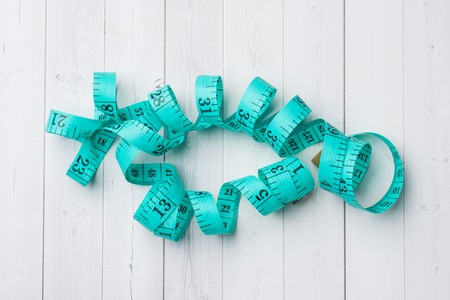Introduction: The Intersection of Bhagya Rekha and Mental Wellness
In the vibrant tapestry of Indian culture, palmistry holds a unique space—woven through family conversations, temple fairs, and personal journeys of self-discovery. Among the many lines etched on our palms, the Bhagya Rekha, or Fate Line, is especially revered. Traditionally, this line has been seen as a symbol of destiny, career prospects, and life’s unfolding path. For centuries, elders and palmists have interpreted its depth and direction to offer guidance on fortune and future. Yet, in recent years, another conversation is gaining momentum across India: the importance of mental health. While discussions about depression, anxiety, and emotional well-being were once shrouded in stigma or silence, today’s India—especially among the youth and urban communities—is starting to embrace openness and support for mental wellness. This intersection between ancient beliefs like the Bhagya Rekha and modern understandings of mental health is not just fascinating; it reflects a nation in transition. How might the lines on our palms reveal not just our fate but also signs of inner struggles? Can the Bhagya Rekha speak to periods of self-doubt or emotional turbulence? By exploring these questions through both cultural wisdom and contemporary insights, we can discover a more holistic understanding of what it means to be truly healthy—inside and out.
2. Understanding Bhagya Rekha: A Deep Dive into Its Meanings
In the realm of Indian palmistry, the Bhagya Rekha—commonly known as the Fate Line—holds a special place in both tradition and daily life. For centuries, learned jyotishis (astrologers) across Bharat have turned to this vertical line running from the base of the palm towards the Mount of Saturn, seeking clues about an individual’s destiny, karma, and inner world. The Bhagya Rekha is not just a physical mark; it is believed to be a reflection of one’s journey through life—shaped by choices, circumstances, and even mental resilience.
Traditionally, the interpretations of Bhagya Rekha are deeply rooted in Indian cultural beliefs about fate (bhagya) and self-determination (purushartha). According to classical texts and popular wisdom shared at family gatherings or during temple fairs, the line’s strength, clarity, and length can signify different aspects of a person’s fortune and mental state. Here is a summary of traditional meanings:
| Bhagya Rekha Feature | Traditional Interpretation | Cultural Symbolism |
|---|---|---|
| Deep & Straight | Strong sense of purpose, stable career path, clear life direction | Seen as blessings from ancestors and positive karma |
| Faint or Broken | Periods of uncertainty, self-doubt, or external obstacles | Often attributed to past-life debts or current emotional struggles |
| Multiple Lines | Many interests, but possible confusion or restlessness | Indicative of inner turmoil or changing ambitions |
| No Visible Line | Lack of defined destiny or unpredictable fate | Sometimes associated with high adaptability or spiritual detachment (vairagya) |
The symbolism embedded in these interpretations extends beyond mere fortune-telling; it reflects how Indians view the interplay between personal effort and cosmic design. In many homes, elders may counsel youth by referencing their Bhagya Rekha during pivotal moments like exam results or marriage proposals, reinforcing the belief that our lines mirror our inner state as much as they predict outward events.

3. Spotting Signs of Inner Turmoil in the Palm
In Indian palmistry, the Bhagya Rekha or Fate Line holds deep cultural significance. Elders often say, “Rekhaon mein likhi hai kismet”—our destiny is written in our lines. However, the fate line does more than just hint at our professional journey; it can also mirror our inner world. When life feels heavy or chitta (mind) is restless, certain changes may appear along this line, reflecting moments of self-doubt or emotional turmoil.
One common sign is a wavy or broken Fate Line. In local beliefs, a wavering Bhagya Rekha suggests times when your mann (heart) and mind are not aligned, possibly due to stress from family expectations or career uncertainties. If you notice islands (small oval shapes) on the line, many pandits interpret these as periods of confusion or low self-esteem—what we sometimes call “manobal ka kami” (lack of inner strength).
Another feature to look for is cross marks on or near the Fate Line. In traditional readings, these are considered signals of obstacles or setbacks that may leave you feeling anxious or doubtful about your path ahead. Sometimes, a Fate Line that suddenly stops and resumes elsewhere points to major upheavals—perhaps a job loss or heartbreak—that challenge your resilience.
For many in India, discussing mental health openly is still new territory. But as wisdom from our grandmothers goes, “Haath ki rekha badalti hai, par himmat se”—lines can change with courage. By learning to spot these signs early, we can acknowledge our struggles and seek guidance, whether through meditation (dhyana), conversation with loved ones, or professional help. Remember: your palm reflects your journey but does not define your worth.
4. Mental Health Stigma in Indian Society
Let’s be honest, when it comes to mental health in India, the conversation is still mostly swept under the carpet. If someone in the family is feeling low or going through a rough patch, elders often say things like “Arre, sab theek ho jayega” or “Don’t overthink, beta.” The stigma is so deeply rooted that discussing one’s emotions or seeking help is often seen as a sign of weakness rather than strength. This attitude doesn’t just come from within the four walls of our homes; it’s echoed by society at large — from the local chaiwala gossiping on the corner to the aunty next door who seems to know everything about everyone’s business except her own.
The reality is that many people who notice changes in their Bhagya Rekha or palm lines and sense internal turmoil hesitate to open up. They fear being labelled as “pagal” or worry about what their relatives will say. This silence can make feelings of self-doubt and anxiety even more intense, creating a cycle where inner struggles are hidden behind forced smiles and polite “Sab badhiya hai” responses.
Common Family & Societal Reactions to Mental Health
| Situation | Typical Reaction/Comment |
|---|---|
| You express feeling sad for days | “Don’t be so sensitive! Just pray or go for a walk.” |
| You talk about seeing a counsellor | “Log kya kahenge? Are you mad?” |
| You mention stress at work/school | “In our days, we worked harder. Don’t complain!” |
Why Does This Stigma Exist?
Much of this stigma comes from age-old beliefs and lack of awareness. Many Indians still think mental health problems are either a sign of weak character or something that can be fixed by visiting temples or doing puja. While spirituality has its place, ignoring mental health concerns only makes matters worse. We need to understand that just like physical ailments show up on our bodies, sometimes emotional pain finds its way into our lives — maybe even reflected in our palm lines like a restless Bhagya Rekha.
The Way Forward: Breaking the Silence
If we want to truly help ourselves and others, we must start having honest conversations at home and within our circles. Instead of brushing off someone’s worries with “Bas sochna band karo,” let’s listen with empathy and remind each other that it’s okay to seek help. After all, every hand tells a story — and sometimes, the most important lines are the ones we choose to rewrite together.
5. Palmistry as a Pathway for Self-Reflection and Growth
In the Indian context, palmistry—especially the study of Bhagya Rekha—is deeply intertwined with our ancient philosophies of self-awareness and inner transformation. Rather than viewing the lines on your palm as a fixed prophecy of fate, consider them as mirrors reflecting your inner world: your emotions, struggles, and hidden strengths. Our scriptures often remind us, “Atma deepo bhava”—Be a light unto yourself. When you observe signs of inner turmoil or self-doubt etched in your Bhagya Rekha, let it be an invitation to turn inward and ask, “What do I need to heal? Where can I grow?”
Palmistry as a Mirror, Not a Verdict
Too often, people in India consult palmists seeking concrete predictions about marriage, career, or luck. But true wisdom lies in using palmistry as a tool for personal discovery. If your Bhagya Rekha appears weak or broken, it is not a life sentence. Instead, it may reflect your current emotional state—a call to nurture your mental health and strengthen your inner resolve.
Embracing Indian Philosophies for Healing
The Upanishads teach us about svadhyaya (self-study) and manas shanti (peace of mind). Let the insights from your palm inspire practices like meditation, journaling, or speaking with someone you trust. These are time-honoured Indian ways to process emotions and reclaim inner balance. Remember, just as rivers carve new paths through land over centuries, so too can you reshape your destiny with conscious effort.
From Self-Doubt to Self-Belief
Your journey with palmistry is ultimately about moving from uncertainty towards self-belief. By recognising patterns of anxiety or low confidence within your Bhagya Rekha, you gain the power to address them proactively. Seek support from family elders, spiritual mentors, or mental health professionals if needed—there is no shame in this; it is part of our collective growth.
So next time you look at your palm, do so with compassion and curiosity. Use what you see not for fear or resignation but as motivation for self-reflection and healing. In this way, palmistry becomes a sacred pathway: not to predict what will happen but to empower who you can become.
6. Seeking Support: Blending Tradition with Modern Mental Health Care
In India, our roots run deep—whether it’s the wisdom of our elders, or the guidance found in ancient practices like palmistry and astrology. When we notice unsettling signs in our Bhagya Rekha, such as breaks or wavering lines, it often prompts us to reflect on our inner world. While honouring these traditions is important, it’s equally vital to acknowledge that modern mental health care offers new tools and perspectives for healing.
Respecting Tradition: Listening to Ancestral Voices
For generations, families have turned to palmists and astrologers to seek reassurance during times of uncertainty. These traditions can provide comfort, a sense of belonging, and cultural validation. If your family finds strength in rituals like lighting a diya, reciting mantras, or consulting a trusted jyotish, allow yourself to embrace these practices as a source of grounding and hope.
Opening Up: Taking the First Step Towards Healing
However, when self-doubt and inner turmoil become overwhelming—reflected not only in the lines on your palm but also in your thoughts and feelings—it’s time to look beyond what tradition alone can offer. Reaching out for help is not a sign of weakness; it is an act of courage. Start by talking openly with loved ones or a respected elder. In many Indian families, open conversations about mental health are still rare, but you can be the one to gently break this barrier.
Embracing Modern Mental Health Resources
India now has a growing network of mental health professionals who understand both global best practices and the unique nuances of Indian culture. Consider seeking support from counselors or therapists who are sensitive to your spiritual beliefs and cultural background. Many organizations—including Sangath, The Live Love Laugh Foundation, and Fortis Mental Health—offer affordable counseling both online and offline, often in regional languages.
Creating Your Own Blend: Tradition Meets Therapy
You don’t have to choose between tradition and therapy—they can work together. For example, journaling after a pooja or meditation session can help process emotions; sharing your experiences with a support group that respects your spiritual path creates community; practicing yoga alongside regular counseling sessions can strengthen resilience. This blended approach honours where you come from while giving you practical tools for personal growth.
Remember: The Bhagya Rekha may offer hints about your destiny, but your journey toward self-understanding and well-being is shaped by both ancient wisdom and new possibilities. By respecting tradition while embracing modern support, you give yourself the best chance to heal and thrive—mind, body, and spirit.


